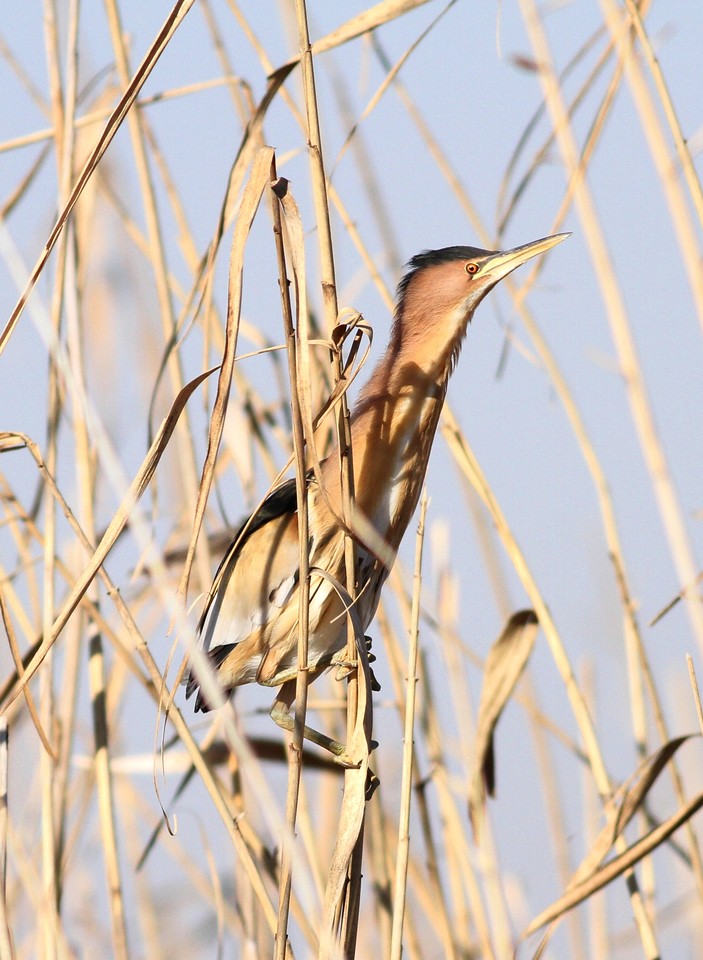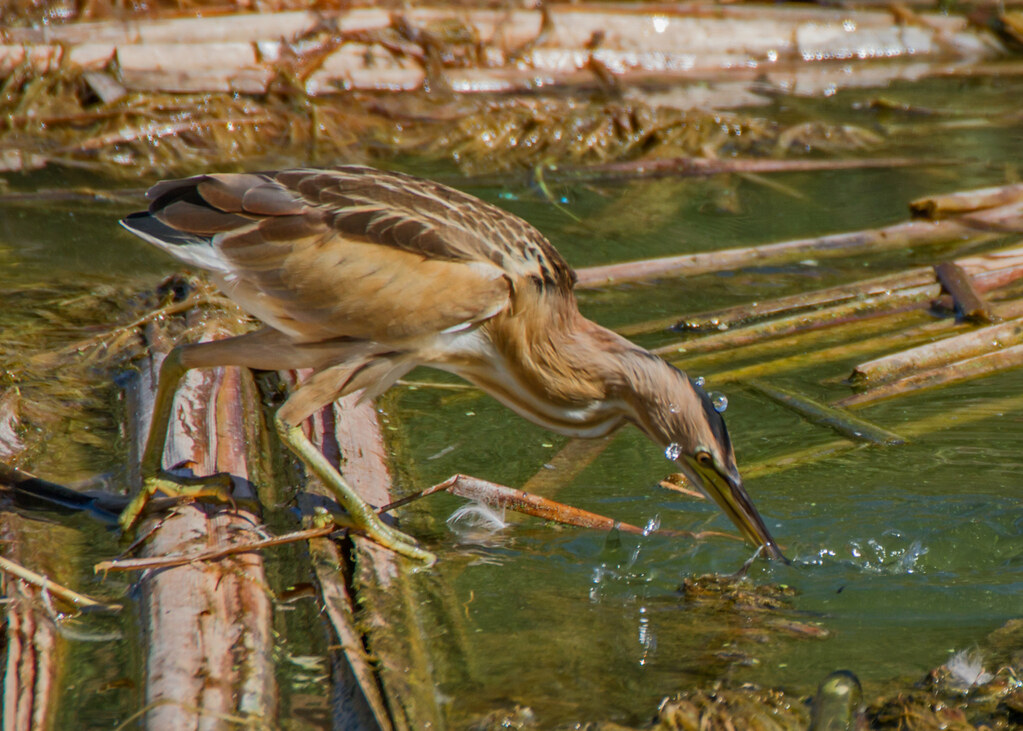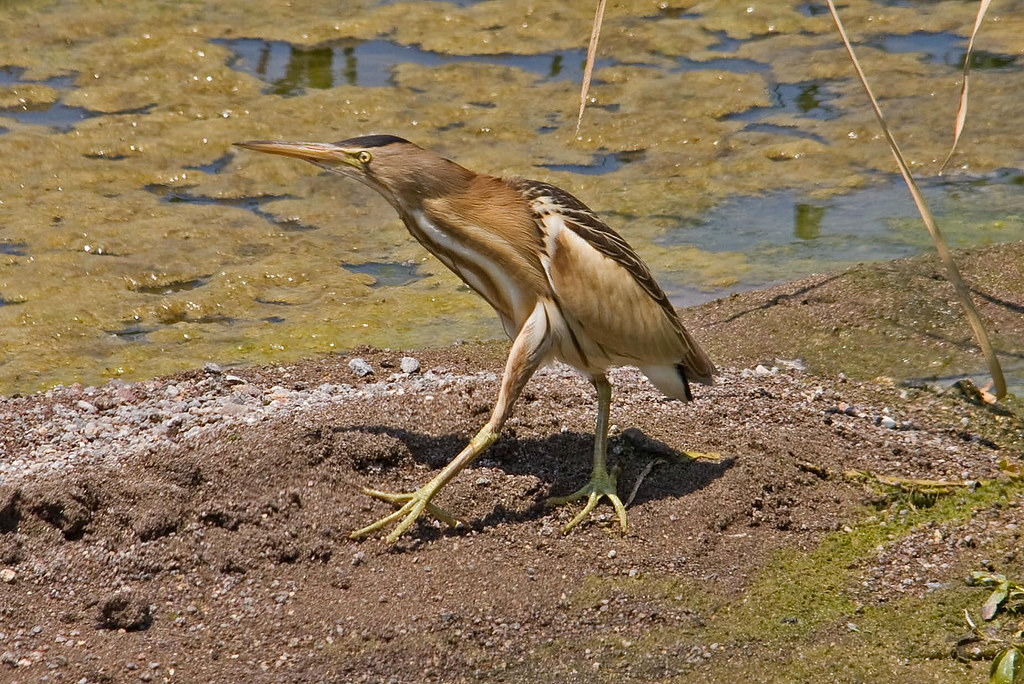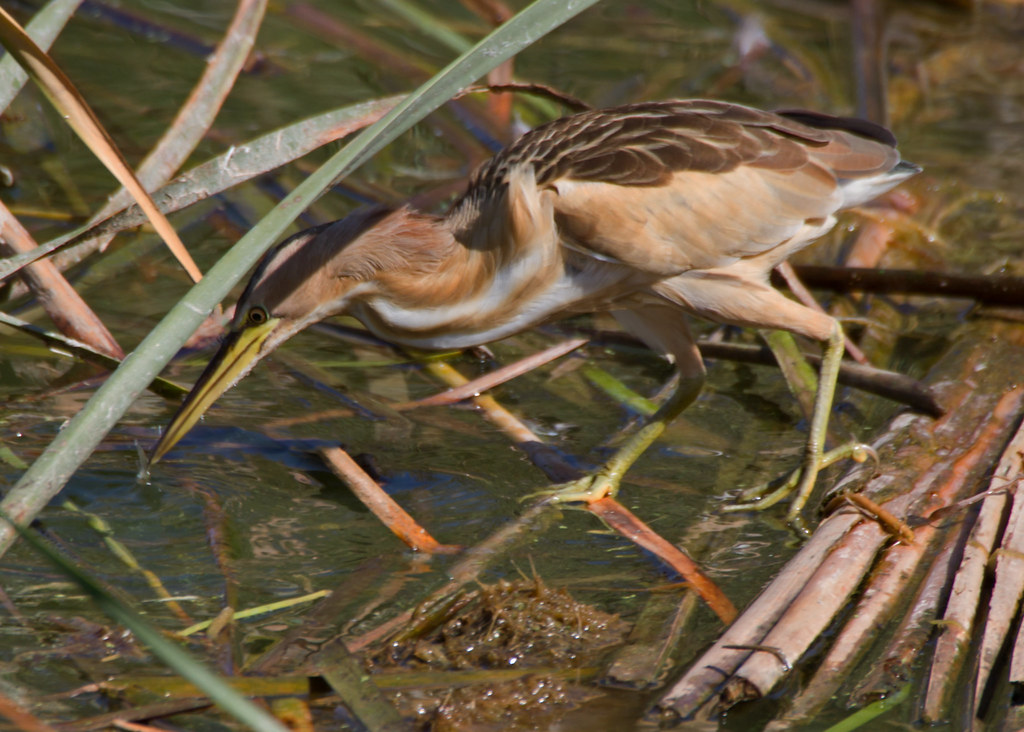Little bittern
Ixobrychus minutus
Few birds blend in with their habitat quite as well as the little bittern. With their yellow, cream, white and brown plumage, vertically stripped neck, and greenish-yellow beak and legs, this bird can be quite difficult to spot among the reeds where it usually lives.
It is around 35cm tall, with a wing span of no more than 58cm and weighing around 140 grams, making it one of the smallest species of heron found in Europe. In fact, they are so small that they can be seen walking on reeds, gripping he stems of the plants with their long toes. It mostly feeds with insects and small invertebrates and amphibians.
These birds migrate to the Danube Delta in late April, for nesting season, and return to southern and eastern Africa in September.

Photographer: Derek Keats

Photographer: Mick Sway
Puține păsări se camuflează atât de bine în habitatul lor precum stârcul pitic. Cu penele lor galbene, crem, alb și maro, gâtul cu dungi verticale și ciocul și picioarele lor de un galben verzui, această pasăre poate fi destul de dificil de observat prin stufărișurile în rândul cărora își duce veacul.
Are în jur de 35 cm înălțime, cu o anvergură a aripilor de numai 58 cm și o greutate de aproximativ 140 de grame, ceea ce o face una dintre cele mai mici specii de stârc din Europa. De fapt, sunt atât de mici încât pot fi văzuți mergând suav pe stuf, prinzând tulpinile plantelor cu degetele lor lungi. Se hrănește în mare parte cu insecte și mici nevertebrate sau amfibieni.
Aceste păsări migrează către Delta Dunării la sfârșitul lunii aprilie, pentru sezonul de cuibărit, și se întorc în sudul și estul Africii în septembrie
Stârc pitic
Ixobrychus minutus
Zwergdommel
Ixobrychus minutus
Nur wenige Vögel fügen sich so gut in ihren Lebensraum ein wie die Zwergdommel. Mit ihrem gelben, cremefarbenen, weißen und braunen Gefieder, dem senkrecht gestreiften Hals und dem grünlich-gelben Schnabel und den Beinen ist dieser Vogel im Schilf, in dem er normalerweise lebt, nur schwer zu entdecken.
Mit einer Größe von etwa 35 cm, einer Flügelspannweite von maximal 58 cm und einem Gewicht von etwa 140 Gramm gehört er zu den kleinsten Reiherarten in Europa. Er ist sogar so klein, dass man ihn beim Laufen auf Schilf beobachten kann, wobei er sich mit seinen langen Zehen an den Stängeln der Pflanzen festhält. Er ernährt sich hauptsächlich von Insekten, kleinen wirbellosen Tieren und Amphibien.
Diese Vögel ziehen Ende April zur Brutzeit ins Donaudelta und kehren im September nach Süd- und Ostafrika zurück.

Photographer: Mick Sway

Photographer: Mick Sway
Seulement quelques oiseaux se fondent aussi bien dans leur habitat que le Blongios nain. Avec son plumage jaune, crème, blanc et brun, son cou dépouillé verticalement, son bec et ses pattes jaune verdâtre, cet oiseau peut être assez difficile à repérer parmi les roseaux où il vit habituellement.
Il mesure environ 35 cm de haut, avec une envergure maximale de 58 cm et pèse environ 140 grammes, ce qui en fait l’une des plus petites espèces de hérons trouvées en Europe. En fait, ils sont si petits qu’on les voit marcher sur des roseaux, agrippant les tiges des plantes avec leurs longs orteils. Il se nourrit principalement d’insectes et de petits invertébrés et amphibiens.
Ces oiseaux migrent vers le delta du Danube fin avril, pour la saison de nidification, et retournent en Afrique du sud et orientale en septembre.
Blongios nain
Ixobrychus minutus
Try using these colors:
Remember, there are always more colors than you think you see!





